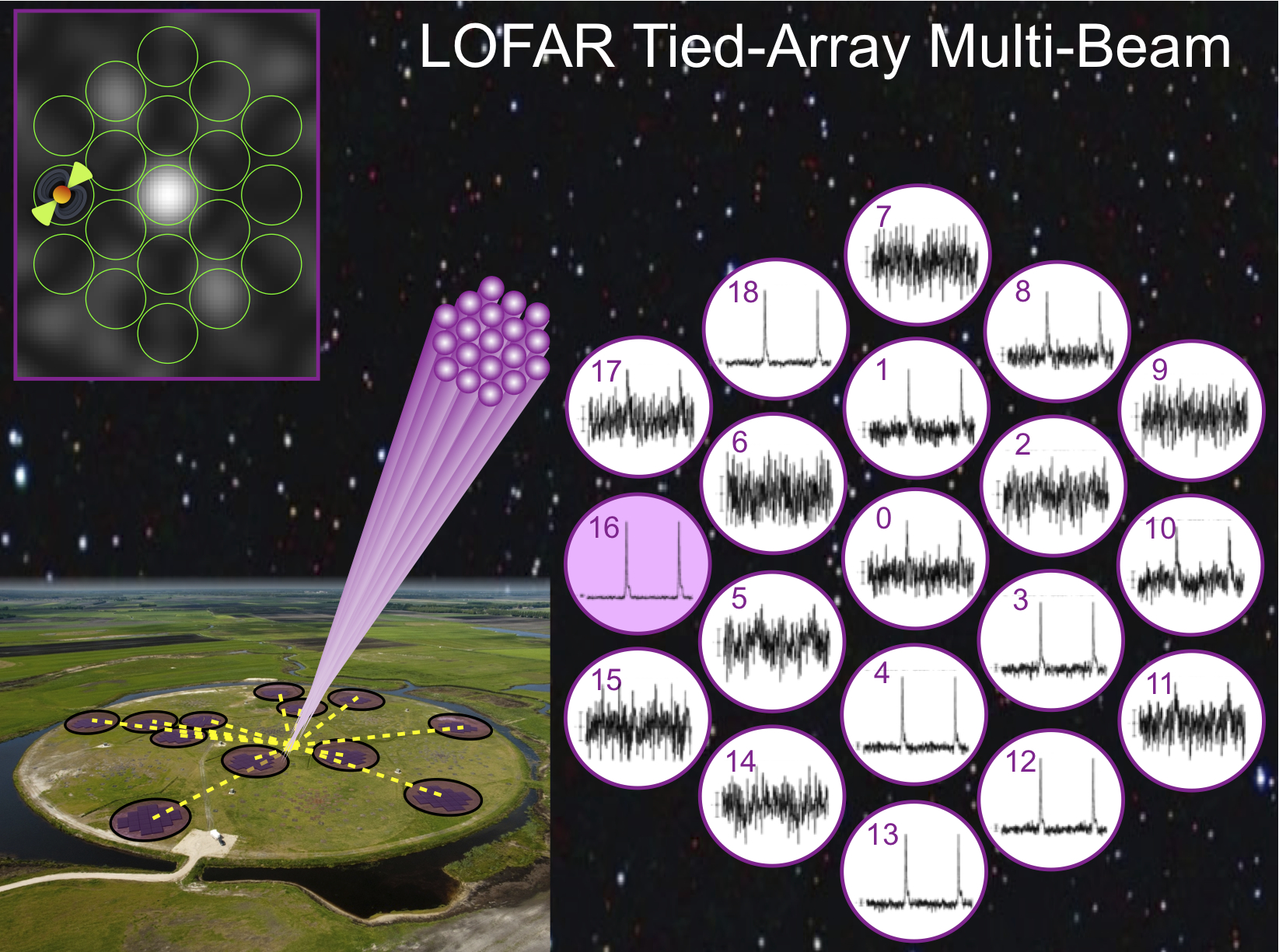Daily Image
27-07-201119 Times the Fun
| Submitter: | The LOFAR Pulsar Working Group |
| Description: | Tied-array beams (i.e. the coherent sum of multiple stations) maximize LOFAR's sensitivity for high-time-resolution observations of e.g. pulsars, planets, flare stars, and cosmic rays. However, tied-array beams come at the cost of significantly reduced field-of-view compared with that of a single station. To efficiently use tied-array beams to survey the sky requires the creation of multiple simultaneous beams. Recently we have begun commissioning this mode in earnest by doing a quick pilot survey above and below the Galactic plane (b > 5 deg). Using the coherent sum of the 12 Superterp HBA stations, we synthesized 19 tied-array beams in order to recover a large fraction of the single station field-of-view. The results from one of these test pointings, observation L26433, is shown here. The known pulsar B0450+55 happens to be located in the direction of one of the tied-array beams (beam 16) and is clearly detected when the timeseries is dedispersed and folded at the known values for this source (right panel). The pulsar is also seen in a number of the other beams from this observation, though with significantly reduced (at least 10 times less) signal-to-noise ratio, as expected. The configuration of the beams on the sky is shown on the left, with the beam pattern of the central beam shown in greyscale. This technique will likely also be employed for high-time-resolution surveys of the sky with the SKA and its precursors, though other possible techniques are also being investigated. The next step for LOFAR is to form > 100 tied-array beams, using all Core stations. |
| Copyright: | ASTRON/PWG/Hessels |
| Tweet |  |
